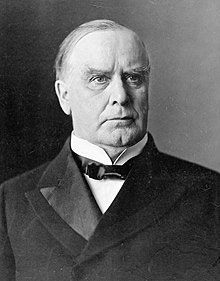The Dramatic Political Party Changes from 1787 to 2022

Ludwell Johnson entitled his 1995 book on the American Civil War and Reconstruction, North against South: The American Iliad 1848 to 1877. His reference to Homer’s ancient Greek epic on war between Greeks and Trojans emphasizes the deep and continuing impact of the American Civil War on American culture. There have been more American books written about the Civil War than on any other subject except those related to the Bible and Christianity. Yet most Americans today have a pathetically shallow and faulty understanding of the historical background, causes, and consequences of the War and Reconstruction.
The principal reason for this is that a politically correct false narrative of the War and Reconstruction now dominates American academia, media, and politics. This dominance has increased almost exponentially with the spreading influence of Cultural Marxism, which has become more visible since the 1960s. However, much of the false narrative is derived from the human tendency to deny and coverup moral and intellectual failings and paste them over with noble-sounding propaganda and self-serving lies.
One serious failing of modern American understanding of the Civil War and Reconstruction is that people, including most academics and media pundits, assume that the Democratic and Republican parties of that era still have the same basic political philosophies today. This is a terrible, damaging, and dangerous error. Today, the political philosophies of both parties are almost opposite to what they were in 1860.
The Democrat Party of 1860 was a Jeffersonian conservative party adhering to strict Constitutional interpretation and limited, decentralized government powers, including strong States Rights as a check against Federal tyranny. It leaned heavily to laissez-faire economic freedom and confidence in popular sovereignty. “Conservative” was a virtual synonym for Democrat. Democrats were frequently called “de-centralizers” and the States Rights Party. The Democrat Party of 1860 was a descendent of the right-wing of Thomas Jefferson’s Democratic-Republican Party, which was known as the “Republican” Party from 1800 through 1824, when Federalist-leaning Republican John Quincy Adams defeated Andrew Jackson in the 1824 presidential election. Jackson dropped the Republican half of the party name and formed the Democrat Party in 1828, defeating John Quincy Adams who ran as a “National” Republican in that election. Jackson was a strong states’ rights, anti- protective tariff, conservative, who professed the necessity of restoring the “Republican” principles of Thomas Jefferson to government. Even though Jackson was a Jeffersonian anti-tariff de-centralizer, he clashed with John C. Calhoun on the Tariff Nullification Crisis of 1832-1833. Calhoun’s inspiration for nullification, however, came from Thomas Jefferson, and strong anti-tariff sentiments continued to dominate Southern political thinking.
The Democratic Party philosophies of 1860 were far from the dominant Neo-Marxist Democrat Party philosophies today In fact, the Jeffersonian doctrines that dominated the Civil War era Democratic Party are closest to modern Republican presidents Ronald Reagan and Donald Trump.
Even as the U.S. Constitution and Bill of Rights were being debated and afterwards during the presidential terms of George Washington, two opposing political philosophies and factions became apparent. We have already discussed the political ideas of Washington’s Secretary of State, Thomas Jefferson, who is the primary mentor of American conservatism. Washington’s Secretary of the Treasury, Alexander Hamilton, favored an elitist dominance of big, consolidated, highly centralized, and powerful Federal Government, where the Constitution would be flexible and even nominal and more attuned to progressive national greatness than individual or states’ rights. This could not be called “liberalism” in the traditional sense, but its adherents frequently called themselves liberals or progressives. It was really a statist philosophy that embraced an intertwining of big government and big business. It called for high taxes, mostly in the form of protectionist tariffs to advance manufacturing, government funded “internal improvements,” corporate subsidies to favored industries, and a national bank that could create fiat money and favor progressive commercial interests. These became the doctrines of the Federalist Party, which was defeated by Thomas Jefferson’s conservative Democratic-Republican Party in 1800.
The Whig Party was formed in 1834 by picking up the pieces of the unsuccessful National Republicans of John Quincy Adams and the defunct Federalist Party. It followed the American System of Economics of Henry Clay, which was basically the same as that of Alexander Hamilton and the old Federalist Party of John Adams. The Whigs were successful in the 1840 and 1848 elections, primarily using military heroes as candidates. At least two of the four men—Harrison, Tyler, Taylor, Fillmore—who held the presidency as Whigs—Tyler and Taylor—were Southerners more conservative than the Whigs expected. The Whig Party collapsed not long after their unsuccessful 1852 election.
The Republican Party was formed in Ripon, Wisconsin in March 1854 from the remnants of the Whig Party and four smaller parties of varying philosophies. A central tenant of the Ripon Republicans was to prevent the spread of slavery from Southern states, but they followed Henry Clay on economics. Abraham Lincoln was primarily an admirer of Henry Clay and his American System of Economics and served seven years in the Illinois Legislature and two in the U.S. Congress as a Whig. By October 1854, he had become a Republican leader in Illinois. His principal political doctrines echoed Henry Clay—high protective tariffs, government funded internal improvements, corporate subsidies, and a national bank to centralize and engineer the money supply. The so-called American System of Henry Clay would be anathema to most modern Republicans. Neither the Republican Platform nor Abraham Lincoln in 1860 advocated to end slavery, but only to limit its spread from Southern states. According to Thaddeus Stevens, perhaps the most powerful Republican in the U.S. House and a sponsor of the Morrill Tariff, passing a higher protective tariff was a much higher priority in the 1860 election campaign than restricting slavery to the South. Although many Republicans gave lip service to the Constitution, the prevailing view of Republicans in Congress was that Constitutional limits stood in the way of strong central government and the powers needed for American progress.
Lincoln followed closely the big government philosophies of Federalist Alexander Hamilton, Federalist John Adams, and Whig Henry Clay. This included intertwined relationships between powerful big government and big business. The railroads were then the biggest factor in big government-big business internal improvements and corporate subsidies. Lincoln became wealthy as a lawyer and lobbyist for big railroads. Lincoln favored a more centralized and powerful Federal government.
While “conservative” was a synonym for Democrats during the Civil War and Reconstruction era, “Radical” was often a synonym for Republicans, although there was a wide range of political thought in the Republican Party. Most of the Radicals were also radical abolitionists. Lincoln was justifiably wary of both Radicals in Congress and Radical abolitionists The Radicals were impatient with Lincoln and later tried to impeach President Andrew Johnson for his opposition to radical civil rights and despotic Reconstruction legislation. Several scholars have even tried to connect Lincoln’s assassination with Radical Republican conspiracies, but the circumstantial evidence though fascinating falls short of provability.
Solidly conservative New York Democrat Governor Grover Cleveland broke the Republican progressive chain by winning the presidential election in 1884. He was defeated in 1888 but came back to win again in 1892.
According to Lochlainn Seabrook, the first conservative Republican president was William McKinley of Ohio, elected in 1896, who defeated Democrat William Jennings Bryan of Nebraska. In 1893, there was a financial panic leading to a depression and considerable economic misery and poverty. Unemployment may have reached as high as 25 percent. This caused a surge of resentful populism and a rapidly growing leftist Populist Party. During the Democrat nominating Convention held in Chicago in July, Bryan called for adding silver to the gold backing of U.S. currency to expand the money supply. This was seen by business and the middle class as inflationary. He also blamed the “greedy” business class for impoverishing the working class.
Near the close of Bryan’s sliver speech, he said these now famous words that won him the Democratic Party Nomination for President "You shall not press down upon the brow of labor this crown of thorns; you shall not crucify mankind upon a cross of gold." Bryan was well known as a Biblical religious and social conservative, but his proposed economic policy to expand the money supply with a bimetal gold and silver backing frightened traditional Democrats who believed in economic freedom and small, limited Federal government. His economic demagoguery scapegoating business also frightened many Democrats, and many left the Party. Bryan also won the nomination of the leftist Populist Party and the votes of many struggling and desperate people. Socialists used the opportunity to infiltrate the Democratic Party. The Republicans reacted by shifting their campaign platform to the right, giving McKinley a clear Republican victory. McKinley, really a moderate conservative, defeated Bryan again in 1900 but was assassinated in 1901. He was succeeded by his Vice President, Republican Teddy Roosevelt. Staunchly conservative Republican William H. Taft won was elected president in 1908. He was beaten by Southern Democrat Woodrow Wilson in 1912, who won 435 electoral votes to Taft’s 8 votes.
Wilson was elected as a conservative Democrat and ended the chain of Northern tariff laws that impoverished the South for over 50 years. Wilson’s comprehensive American history volumes were also conservative on the Civil War and Reconstruction. His accomplishments, including a Nobel Peace Prize and getting the 19th Amendment for Women’s Right-to-Vote passed, are too numerous to cover here. Wilson, a devout Christian, was in many ways a highly accomplished conservative intellectual, but he became a strong advocate and practitioner of using government power to regulate the economy and monetary system. which has earned him a reputation as a liberal. His segregationist views, which were very common in both North and South in 1912, however, have lately been used to defame and “cancel” him. I believe both conservative and liberal tags mischaracterize him, and his recent defamation by virtue signalers both right and left are reprehensible.
The Democratic Party was once a staunchly conservative Constitutionalist Party. Now surely less than 5 percent of Congressional Democrats could be characterized as only moderately liberal. The Democratic Party of today is a corrupt and tyrannical party of social and economic radicalism with no regard for the Constitution, national security, or truth.
The Republican Party of 1860 was a Sectionalist party favoring highly centralized big government power closely intertwined with big business, with little regard for the Constitution. It was for oppressive high protectionist tariffs, corrupt government funded “internal improvement” projects, corporate subsidies, and centralized banking to create fiat money. Its political platform did not advocate ending slavery but only to limit it to the South. Lincoln did not go to war to free Southern slaves. Lincoln invaded the South because Southern secessions would shut off Northern tariff revenues and destroy the Northern shipping and industrial economy. Today, most Congressional Republicans hold Constitutional and economic philosophies little different from Southern Democrats in 1860. However, a significant minority are still addicted to big government and campaign funding from big business.
Both parties need to stop hypocritical virtue-signaling, do some honest homework, and have the intellectual integrity and courage to advocate and work for what is in the best long-term interest of the American people.









 Mike Scruggs is the author of two books: The Un-Civil War: Shattering the Historical Myths; and Lessons from the Vietnam War: Truths the Media Never Told You, and over 600 articles on military history, national security, intelligent design, genealogical genetics, immigration, current political affairs, Islam, and the Middle East.
Mike Scruggs is the author of two books: The Un-Civil War: Shattering the Historical Myths; and Lessons from the Vietnam War: Truths the Media Never Told You, and over 600 articles on military history, national security, intelligent design, genealogical genetics, immigration, current political affairs, Islam, and the Middle East. 


